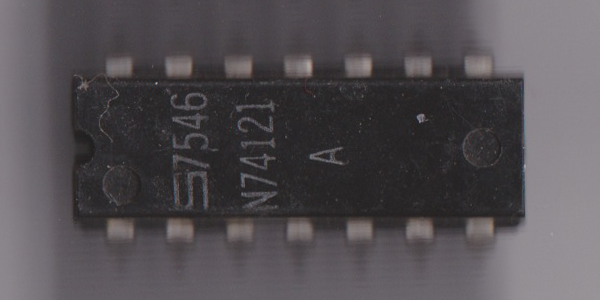
These multivibrators feature dual active LOW going edge inputs and a single active HIGH going edge input which can be used as an active HIGH enable input. Complementary output pulses are provided.
Pulse triggering occurs at a particular voltage level and is not directly related to the transition time of the input pulse. Schmitt-trigger input circuitry (TTL hysteresis) for the B input allows jitter-free triggering from inputs with transition rates as slow as 1 volt/second, providing the circuit with an excellent noise immunity of typically 1.2 volts. A high immunity to VCC noise of typically 1.5 volts is also provided by internal latching circuitry. Once fired, the outputs are independent of further transitions of the inputs and are a function only of the timing components. Input pulses may be of any duration relative to the output pulse. Output pulse length may be varied from 20 nanoseconds to 28 seconds by choosing appropriate timing components. With no external timing components (i.e., Rint connected to VCC, Cext and Rext/Cext open), an output pulse of typically 30 or 35 nanoseconds is achieved which may be used as a dc triggered reset signal. Output rise and fall times are TTL compatible and independent of pulse length.
Pulse width stability is achieved through internal compensation and is virtually independent of VCC and temperature. In most applications, pulse stability will only be limited by the accuracy of external timing components.
Jitter-free operation is maintained over the full temperature and VCC ranges for more than six decade of timing capacitance (10pF to 10µF) and more than one decade of timing resistance (2kΩ to 30kΩ for the 54121 and 2KΩ to 40kΩ for the 74121 ). Throughout these ranges, pulse width is defined by the relationship: (see Figure 1)
tW(out) = Cext Rext In2
——————————
tW(out) ≌ 0.7 Cext Rext
Manufactured: 1975 week 46